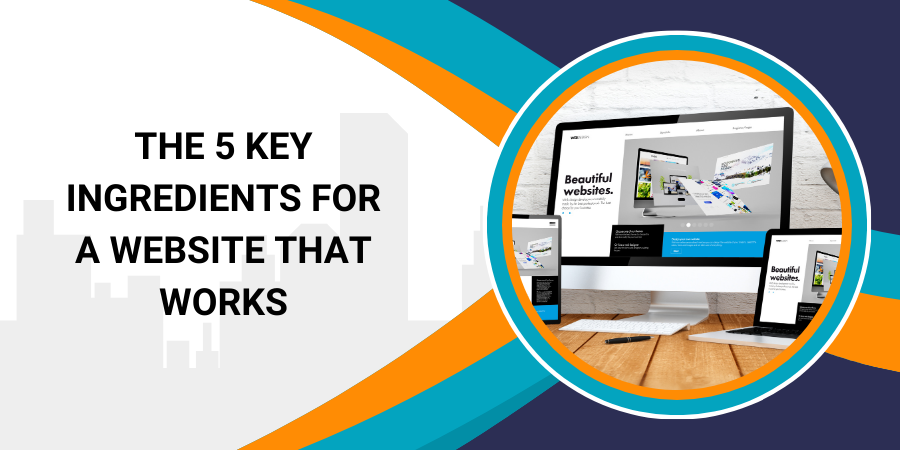
In the course of my work I look at a lot of websites and the majority of business websites have obviously had time and money invested in creating a functional and aesthetically pleasing designed site. Unfortunately, the same level of effort and professionalism doesn’t seem to have been applied to whether it’s reader-friendly.
Assuming a professionally built and designed website is your foundation, these are my five essentials for a website that converts more visitors to enquiries.
1: Navigation that I can understand
Menus should be simple and a no-brainer to find what you’re looking for. It may be tempting to create quirky new titles for your pages, but will your visitor understand them?
For instance:
- ‘How we work’ – what does that mean?
- ‘Who we are’ – is this a company history, an About page or a gallery of your team?
- ‘Opportunities’ – who for, sponsorship, partnership, recruitment?
- ‘Benefits’ – is this a loyalty scheme, a list of what customers get or an employee package?
These are pretty tame compared to some very quirky tabs that are completely incomprehensible!
Stick to what people don’t have to think about so use ‘About’ and ‘Contact’, not ‘Company profile’ and ‘Get in touch’.
Remember, your visitor doesn’t want to have to work hard to find what they’re looking for – it should be completely transparent and easy.
2: Headlines on every page
Your SEO expert will be keen to have the key words in the headlines on every page, but that doesn’t engage with your visitor in the same way. If you sell widgets and you have a product page called ‘Widgets’, you don’t need to tell people that they’re on the widgets page, but a headline saying ‘Here’s how to get your equipment working at its best’, will present a benefit.
In tech language the search engine is looking for the H1 tag (the most important headline). However, it doesn’t differentiate in relation to font size, so you could have the page name in 10 point and the H2 (next most important heading) in 20 point. E.g.
Widgets
Here’s how to get your equipment working at its best
‘Welcome to our website’ or any variation of that is not a headline. Think about the visitor and focus on their problems and create headlines that tell them how you can help. The rule of thumb is that a visitor should understand how you can help them without having to scroll down, so be clear.
3: Write for your reader
The majority of websites, especially those written by owners or employees or the company whose site it is, are predominantly inwardly-focused. So there’s a lot of ‘we’, ‘our’ and ‘us’ language, which doesn’t connect with the reader in the same way as ‘you’ and ‘your’.
People are not interested in what you do – they want to know what they get. The level of engagement when you write about them is dramatically higher.
It’s simply a case of repositioning your message, so instead of ‘We do [this]’, you write ‘You can have [that]’. If you know what your customers want, the problems they experience and the results they are looking for it will make it much easier to create messages that tap into that, both in headlines and in any copy.
4: Tell people what to do
… and make it easy for them to do it. Every page – and every section on your home page – needs a call to action (CTA). On the home page that may be a clickable box or link, on other pages state what you want people to do next.
‘For more information call us on [your phone number] or email us now.’
If you want them to phone, put the number right under their nose and ensure the ‘email us’ instruction either takes them to your enquiry form or automatically launches an email for them to complete. Don’t make them work to get in touch.
In addition, including your phone and/or email in your brand banner at the top of every page (usually top right) is a good strategy so people who come to the site to get in touch, don’t have to click more than necessary.
5: Understand your SEO
Professional SEO costs a lot of money, but you can give your site a head start with a few tweaks.
- Know the key words and phrases for every page
- Ensure at least one key word is in the URL g. yourwebsite.com/marketing-services
- Add Alt tags with key words and descriptions to every image that’s relevant to the image and your key words for that page
- Make sure that the copy is focused on your key message for the page – short and succinct is good, but include relevant key words and phrases. You don’t need to stuff the copy with key words, as long as the message is relevant.
- Ensure all your links and connections work – and check them all regularly.
If you address these 5 issues your website will work much better in engaging visitors and generating leads.
